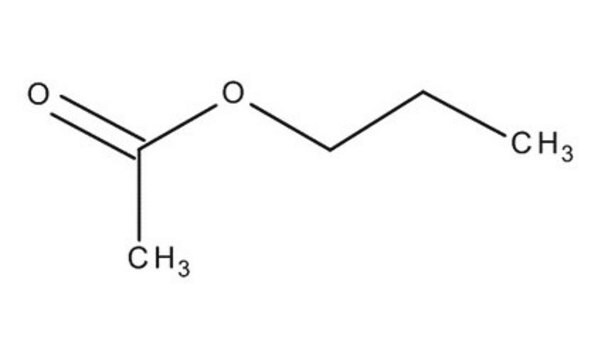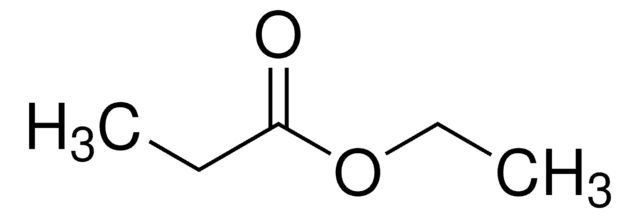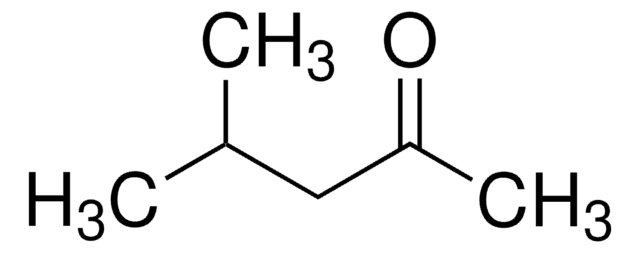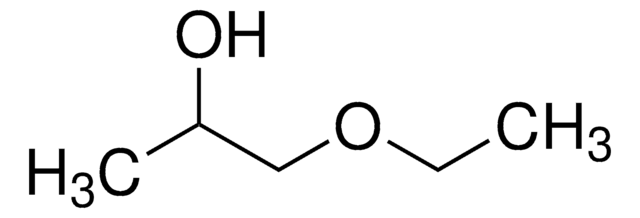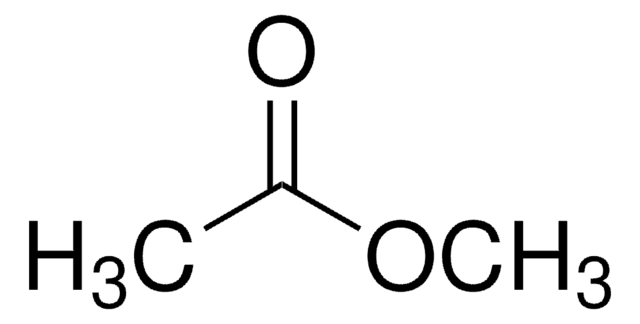537438
Propyl acetate
≥99.5%
About This Item
Produits recommandés
Densité de vapeur
3.5 (vs air)
Pression de vapeur
25 mmHg ( 20 °C)
Essai
≥99.5%
Forme
liquid
Température d'inflammation spontanée
842 °F
Limite d'explosivité
1.7 %, 37 °F
8 %
Impuretés
≤0.01% Acetic acid (free acid)
≤0.1% Water
Résidus d'évap.
≤0.01%
Couleur
APHA: ≤15
Indice de réfraction
n20/D 1.384 (lit.)
pb
102 °C (lit.)
Pf
−95 °C (lit.)
Densité
0.888 g/mL at 25 °C (lit.)
Chaîne SMILES
CCCOC(C)=O
InChI
1S/C5H10O2/c1-3-4-7-5(2)6/h3-4H2,1-2H3
Clé InChI
YKYONYBAUNKHLG-UHFFFAOYSA-N
Vous recherchez des produits similaires ? Visite Guide de comparaison des produits
Description générale
Application
Mention d'avertissement
Danger
Mentions de danger
Conseils de prudence
Classification des risques
Eye Irrit. 2 - Flam. Liq. 2 - STOT SE 3
Organes cibles
Central nervous system
Risques supp
Code de la classe de stockage
3 - Flammable liquids
Classe de danger pour l'eau (WGK)
WGK 1
Point d'éclair (°F)
53.2 °F - closed cup
Point d'éclair (°C)
11.8 °C - closed cup
Faites votre choix parmi les versions les plus récentes :
Déjà en possession de ce produit ?
Retrouvez la documentation relative aux produits que vous avez récemment achetés dans la Bibliothèque de documents.
Les clients ont également consulté
Geranyl acetate synthesis by lipase-catalyzed transesterification in supercritical carbon dioxide.
Notre équipe de scientifiques dispose d'une expérience dans tous les secteurs de la recherche, notamment en sciences de la vie, science des matériaux, synthèse chimique, chromatographie, analyse et dans de nombreux autres domaines..
Contacter notre Service technique